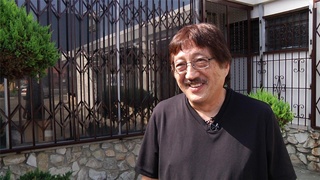Interviews
Looking at your country from the outside
As I say, if you travel, and you meet the people, they’re all the same. So when I have a chance to talk to school children here, I tell them during your school years, you have time to spend studying in a different country. So if you can do that, please do that because it not only—when you look at your own country from the outside, you see it in a different light. You see the good things and the bad things. So I tell them to be proud of their good things and change the bad things. So, looking at America is the same for me—looking from the outside. So not everything is good about your country. But Japan, also—not everything is good about Japan. But you try to make it a better world, your part of the world. You try to make it a better place for everyone.
Date: November 28, 2003
Location: Saga, Japan
Interviewer: Art Nomura
Contributed by: Art Nomura, Finding Home.
Explore More Videos







Postwar school-life
(b. 1930) Half Japanese and grew up in both Japan and the United States.

On Challenging Institutions
(1938-2020) Japanese American attorney and civil rights activist

Pop and Balls
(1938-2020) Japanese American attorney and civil rights activist

Re-examining Identity
(1941-2018) Japanese Canadian photojournalist and activist



Conflicted about immigrating to America (Japanese)
(b. 1925) War bride

Defining "Nikkei"
(1941-2018) Japanese Canadian photojournalist and activist

Unique Identity from Having Multiple Backgrounds
(b. 1938) Philipines-born hikiagesha who later migrated to the United States.
